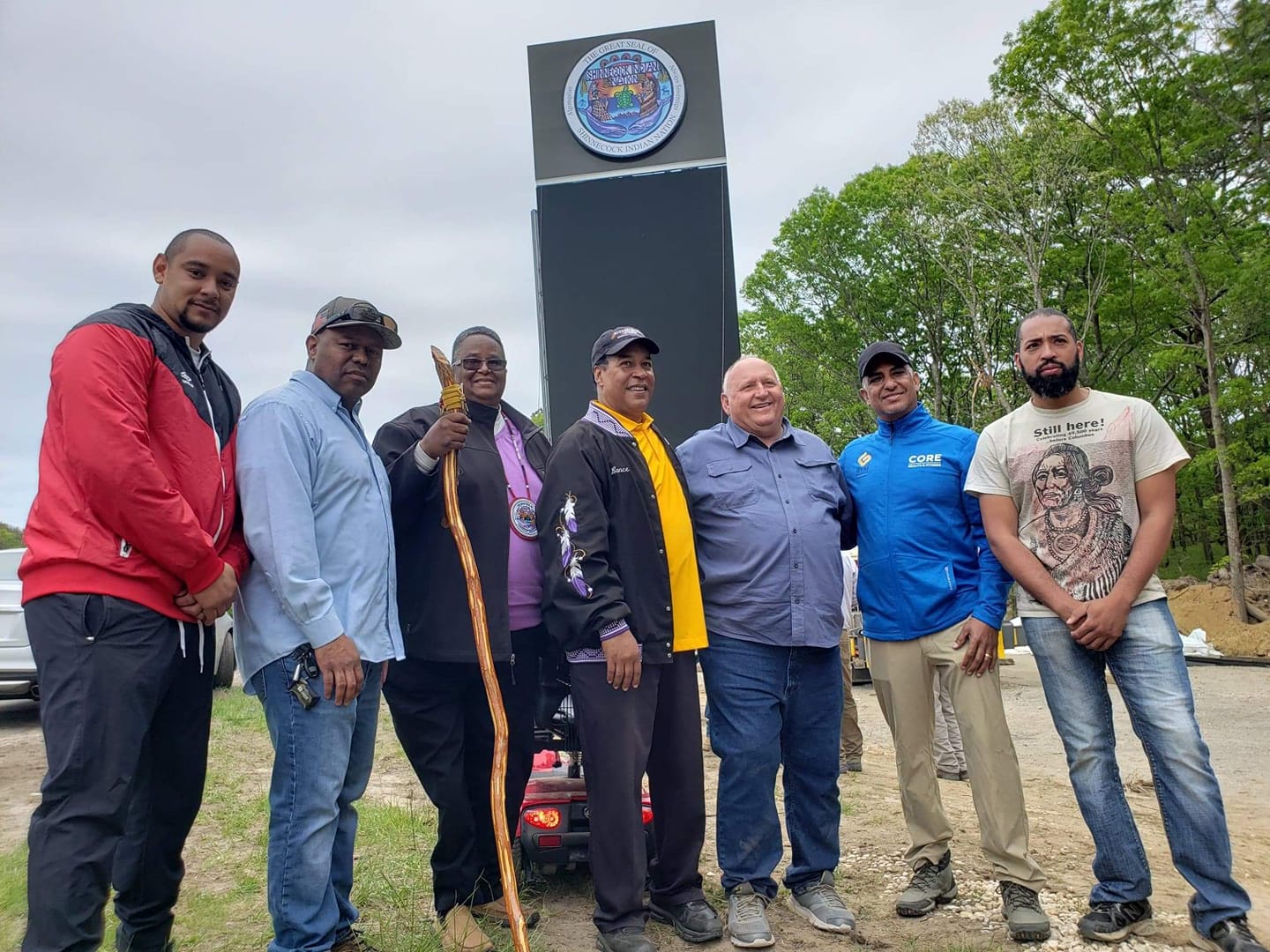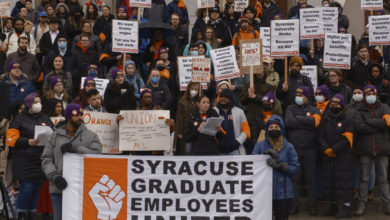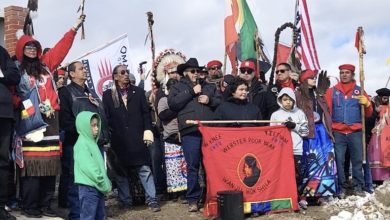
The drive from New York City to eastern Long Island is along State Route 27, the Sunrise Highway. The name refers to the early-rising, eastward-moving traffic which, during the summer, can pack the route so heavily that one can expect to sit nearly still in one’s car for an extra hour before finally arriving at the Hamptons. This is a beach-house destination for New York City’s most affluent residents, or for those who can afford a night or two in one of the many seafront inns which line the shore.
Despite how heavily commercialized this playground of affluence already is, many residents of these towns and commuters of Route 27 are pressuring their elected officials to push back against the Shinnecock Nation. And for what? For using sovereign Native land to bring some extra revenue into their community.
On Memorial Day, the Shinnecock Nation, an Algonquian-speaking tribe native to Long Island, unveiled a 60-foot tall LED screen billboard alongside a portion of Route 27 which runs through their land in South Hampton. The billboard’s advertising space is prime for any business looking to reach the massive traffic which passes every day. More than 70 business had reached out to the tribe’s Council of Trustees with an eye towards doing just that.
The money raised would go to a health and dental center, for day care, to fix crumbling roads and to fund a tribal police department. Half the Shinnecock families live below the federal poverty line.
Despite the simplicity of the idea, practically every step of constructing and unveiling the billboard has been met with backlash by state and local governments. The unveiling boldly defied an order issued by the New York State Department of Transportation to stop construction of the billboard.
While the order came too late to stop the first sign from being lit, it could prove troublesome to a second billboard the tribe plans on the opposite side of the highway. The tribe has filed a federal complaint against the New York State Department of Transportation in hopes that the cease and desist order on construction will be lifted.
Perhaps the most vocal antagonist is the town of Southampton, and their Town Supervisor Jay Schneiderman, “The summer crowd comes here to escape the metropolis, only to find this urban element at the gateway to the Hamptons,” Schneiderman. He has called the billboard “out of character,” “distracting” and a “hazard to traffic.”
Schneiderman does not speak for everyone. Some residents have expressed their support for the Native nation, and offered donations to defray the tribe’s legal costs.
The reservation, which had its boundaries solidified by 1859 and spans a modest 800 acres, lies within the township of Southampton, the west-most of the Hamptons. This places their land at what could be considered the “gateway” to the Hamptons.
Tela Troges, a lawyer and tribe member who spoke with Liberation News about the legal proceedings, said that Schneiderman had attempted many covert tactics to buy the land from the Shinnecock Nation with absolutely no authority to do so. “Anything they do, they never consider us,” she said, with reference to Schneiderman’s rudeness, to the blatant racism by nearby Southampton residents and the “legal loopholes” that the State has used to string along its groundless cease and desist order. Troges stated adamantly that the Shinnecock people were determined to see the billboards fully constructed, no matter what injustices stand in their way.
Lance Gumbs, the tribe’s vice chairman calls Schneiderman’s opposition hypocrisy. “They’re building mega-mansions on half-acre parcels of land out here. You have a cell tower,” he said. “All of these things are eyesores to us. For 400 years we’ve lived here and watched the desecration of land.”
Despite only receiving federal recognition in 2010, the Shinnecock history on what is now called Long Island runs deep, as does their history of struggle against settler-colonial pressures.
“The Hamptons have said no to us with every development idea that we’ve had as an Indian tribe to better our way our life here.” Gumbs pointed out that in the 1980s “We got shut down for selling cigarette cartons on our reservation. In the 1990s, we got shut down for trying to open a bingo hall and casino on our property. It seems every time we want to do something to make ourselves some money, we get stopped. They want us poor. No more. And we have some other ideas to make money coming along, too.”
“We own all this land, from the south side of the Sunrise Highway to Peconic Bay, all deep woods. We leased a right-of-way for the superhighway to the federal government in 1959. We are nationally recognized as a separate nation. And we paid $75,000 for state permits and built this.’”
“We will follow the Dark Skies guidelines—the video will be dimmed during the night. And we informed the towns and the county on what we intended to do, so here it is …The top of the billboard does not rise above the treeline.
“We’re seeing a clear pattern that is based on the town trying to assert control over the tribe and as a federal tribe we’re just not going to have it any longer,” he added. “When we start to assert ourselves and do something that would benefit our community, we’re public enemy number one.” He asserted the Shinnecock’s right to economic self-sufficiency.
In an interview with Liberation News, Jonathan Smith, who was the first to open a tobacco shop on Shinnecock soil and has since been thoroughly involved in the tribe’s affairs, called the actions of New York State “jurisdictional misconduct.” He referred to the actions taken by the Department of Transportation as “legal scare tactics without any legal teeth.” However much the state and local officials would like their scare tactics to discourage the tribe from continuing with construction, the Shinnecock Nation remains firm in their decision to construct the signs.
Taking turns guarding the sign
As they fight to continue operating the first sign and build the second, many members of the Shinnecock Nation have set up beach chairs at the construction site of the second sign, taking turns keeping a watch for state troopers who might interfere with the construction.
“Its a matter of moving forward with something that will benefit the entire community and help to improve the lives of our tribal citizens… it’s about economic self-sufficiency,” said Gumbs.
The completion and operation of the billboards, topped with a 12-foot diameter of Shinnecock seal, has important symbolic value for the tribe in addition to providing economic resources.
Bryan Polite, the Chairman of the tribe’s Council called the billboards “ a marker of who we are, and to show people that this is our land.”
In the meantime, the tribe has put together a toolkit for those who want to show solidarity with them on how to apply pressure to state and local elected officials. It is found here.






